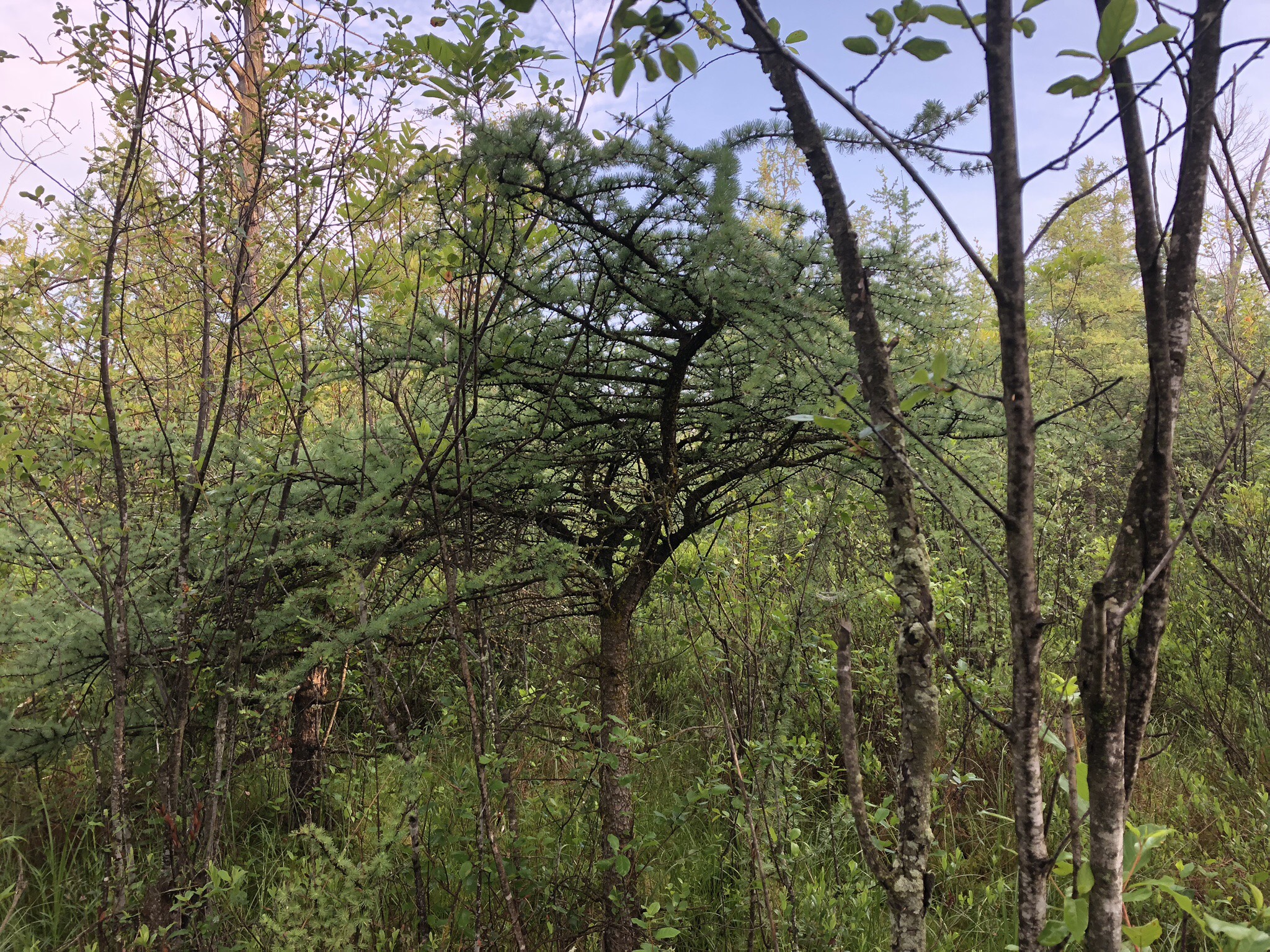Many of the birds I heard and saw were also expected: yellow warblers, robins, gray catbirds, red-winged blackbirds, common yellowthroats, cedar waxwings, chickadees, wood ducks, and a green heron. Delightful, no doubt, but they didn’t include any of the hoped-for birds, like a mourning or Canada warbler, or a white-eyed vireo. The sunrise through the tamaracks, in combination with the morning dew, gave the needles a bluish tinge. Meanwhile I appreciated the treasures of the bog: pink lady’s slippers orchids, unique sedges like cottongrass, and blueberry and huckleberry. Of course, the hummocks of sphagnum moss offered a delightful color palate of red, green, and brown; while also varying the topography so that I had to listen for rare birds instead of also looking for them.
After wandering around the outskirts of the tamaracks and appreciating the sunrise, I stopped and touched a particularly burly young tamarack. From this tree, at about eye level, flushed a good-sized bird that jolted me back from the tree; a moment later I realized it was a black-billed cuckoo, and a moment after that I saw it had flushed from its nest. Here was a delightful find!











